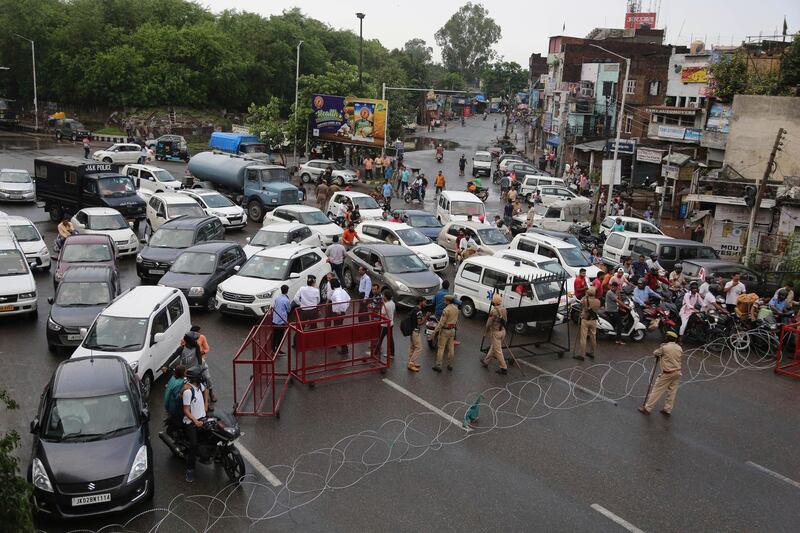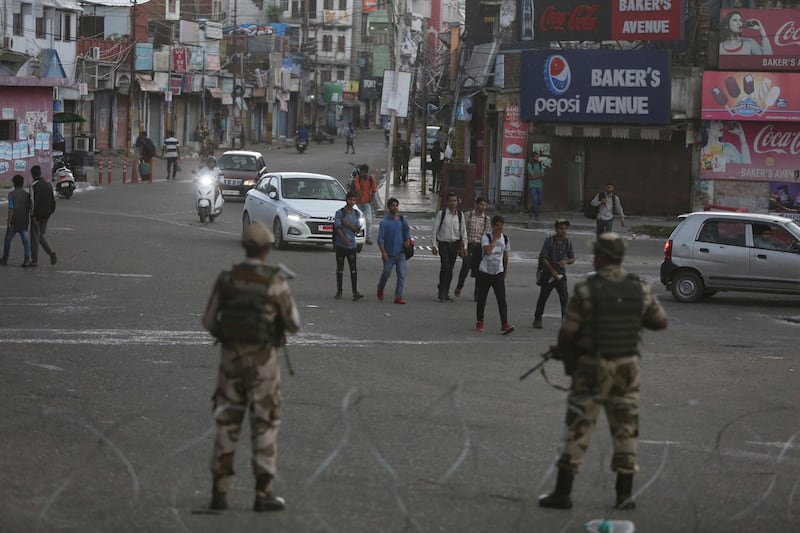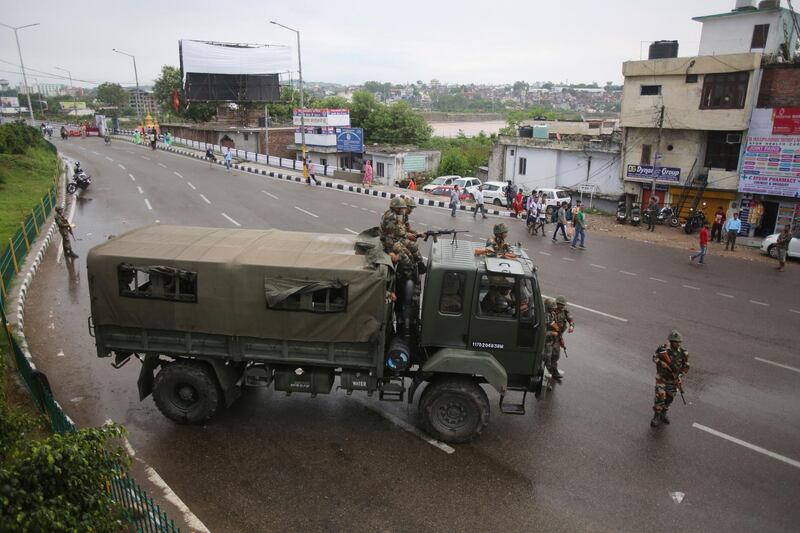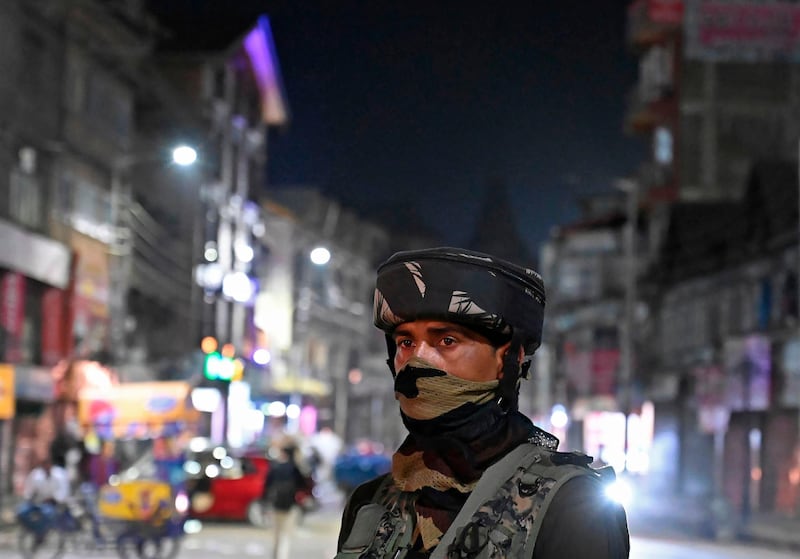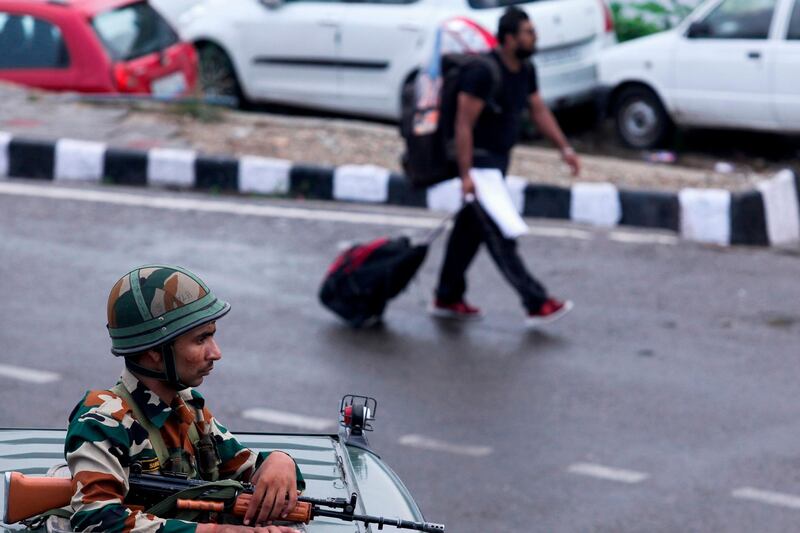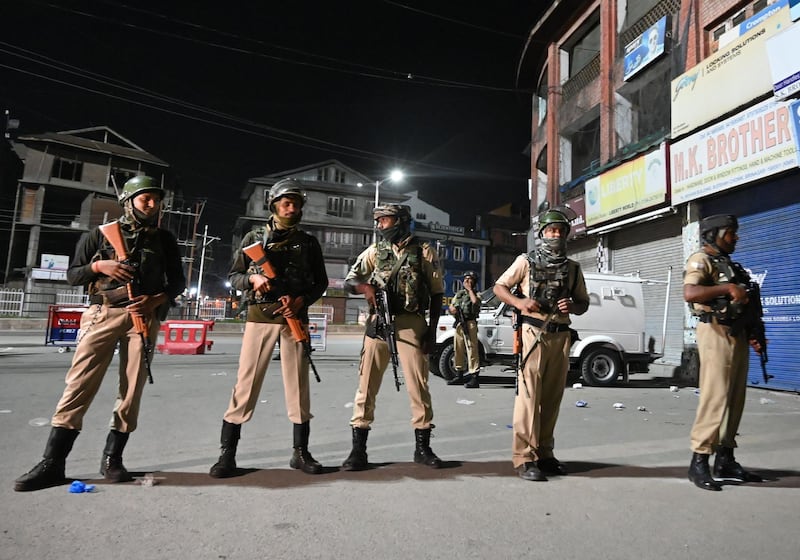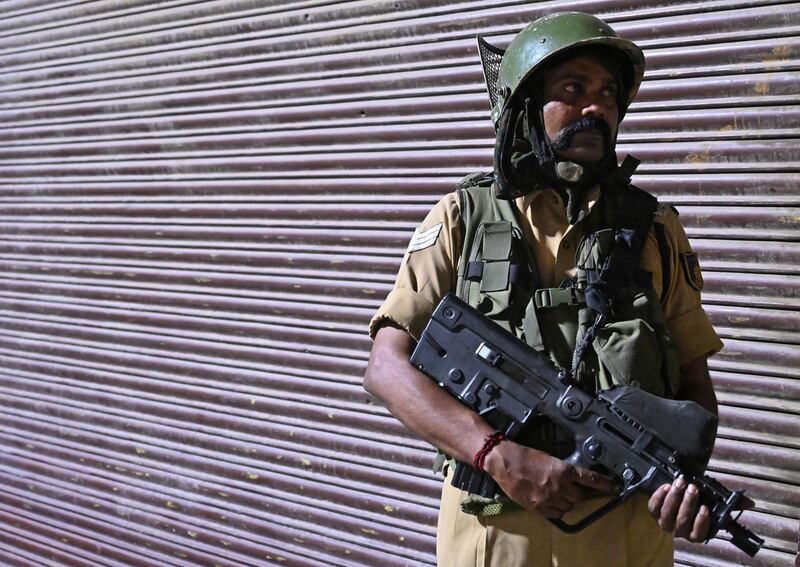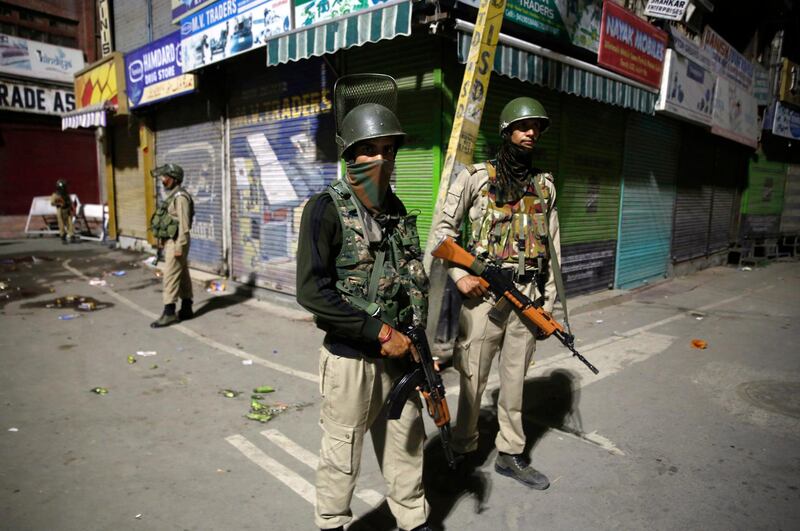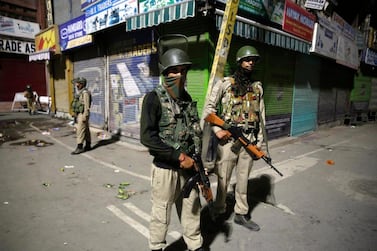India has used a presidential order to seek an end to the special constitutional status accorded to the state of Jammu and Kashmir in a controversial move that is likely to spark further conflict in the disputed region.
The move by Prime Minister Narendra Modi’s government, supported by President Ram Nath Kovind, is expected to spark further unrest, and came amid a huge troop deployment to the disputed region.
A related clause, Article 35A, prohibits Indians from outside the region from buying land or permanently settling in the Muslim-majority territory.
What is the latest news on Kashmir?
Mr Modi's Hindu nationalist-led government has proposed to remove Article 370 of India's constitution on 5 August by a presidential order. Another clause, Article 35A, which reserved property and employment rights with residents of J and K, has now been abrogated by the presidential order.
Critics of the move say that in doing away with Article 370, the government hopes to change Indian-controlled Kashmir’s Muslim-majority demographics by allowing in a flood of new Hindu residents.
To tackle any law and order situation, the region has been put under a heavy security cover, with prohibitory orders in place against public assembly. Local politicians critical of India's move have been put under house arrest and internet and phone service have been cut.
Amit Shah, India’s Home Minister, told members of the upper house that the government had also decided to split the state into two union territories – Jammu and Kashmir, which will have a legislature, and Ladakh, which will be ruled directly by the central government without a legislature of its own.
Kashmir is divided between rivals India and Pakistan but claimed by both.
Where is Kashmir and what are its borders?
Kashmir – bordered by China, India, Pakistan and Tibet – is a region around the size of Germany that features majestic mountain peaks, deep valleys and barren plateaus.
About two-thirds of the area is controlled by India, making up the country's northern-most and only Muslim-majority state of Jammu and Kashmir. The Pakistan-administered portion includes the Gilgit-Baltistan and Azad Kashmir areas.
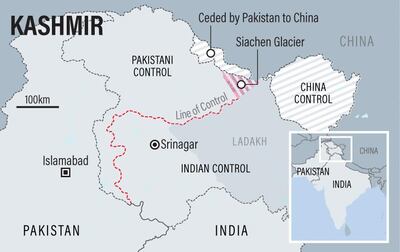
Kashmir is home to K2, the world's second-tallest mountain at more than 8,600 metres high, which is in the Pakistan side of the Karakoram mountain range. It is crossed by the Indus River, one of the longest in the world at around 3,000 kilometres.
At the end of British colonial rule in 1947, the subcontinent was split into Hindu-majority India and Muslim-majority Pakistan. Both countries claim the Kashmir region and have fought two full-blown wars over it.
In July 1949 they agreed to a UN-proposed ceasefire line that became a 740-kilometre de facto frontier called the Line of Control, and which remains today.
A UN resolution adopted in 1948 said that the people of Kashmir should decide in a referendum whether they want to be part of India or Pakistan once both nations demilitarised. That did not happen and hence no vote took place.
What does Kashmir's special status mean?
Article 35A of India’s constitution permits the local legislature in Indian-controlled Kashmir to define permanent residents of the region.
The article came into force in 1954 by a presidential order under Article 370.
Article 35A forbids Indians from outside the state from permanently settling, buying land, holding local government jobs or winning education scholarships in the region.
The article, referred to as the Permanent Residents Law, also bars female residents of Jammu and Kashmir from property rights in the event that they marry a person from outside the state. The provision also extends to such women’s children.
Since Jammu and Kashmir still has a Muslim majority, the effect of Article 35A has been to keep it so by preventing Hindus from settling permanently in the state.
What is the history of Article 370?
Two months after India won independence from British rule in August 1947, Maharaja Hari Singh, the then ruler of Jammu and Kashmir, signed an Instrument of Accession for the state to join the rest of the Indian union, formalised in Article 370 of the constitution with the special status.
The measure granted a higher degree of autonomy to Jammu and Kashmir than to other states. Laws made in New Delhi for the rest of India would apply in Jammu and Kashmir only if the Indian president first issued an order to that effect and the state’s government then concurred.
Only in aspects of foreign relations, defence and communications would Jammu and Kashmir have to fall in line with Indian policy.
The demographics grew even more skewed towards Muslims when, in 1989 and 1990, close to half a million Hindus were forced out of Kashmir under threat of attack by Islamic militant groups that claimed to seek freedom for Kashmir.
How can Article 370 be revoked?
Article 370(3) of the Indian constitution permits revocation of the law by presidential order. However, such an order must be introduced before the state’s Constituent Assembly.
Since that body was dissolved in 1957, experts have different views on the abrogation of the law, with some believing it needs approval by state lawmakers and others seeing a presidential order as sufficient.
The validity of Article 35A has been brought before India’s Supreme Court. BJP members have said that if the court upholds the provision, the Modi-led government will revoke it by presidential order.
What next for Kashmir?
If Kashmir's special status will be repealed, people from the rest of India will have the right to acquire property in the region and settle there permanently.
Kashmiris fear this will lead to a demographic transformation of the only Muslim majority state in India.
Pakistan's foreign ministry said India's action violates UN resolutions, which allowed for Kashmiri self-determination. Pakistani officials say India was trying to void that right.
The foreign ministry’s statement said Pakistan will “exercise all possible options” to block India’s move.
US President Donald Trump has offered to mediate between India and Pakistan on the issue of Kashmir. While Pakistan has welcomed the offer, India has repeatedly rejected it, most recently on August 5, saying the dispute is between the two countries.
What is Kashmir known for around the world?
Kashmir is famous for its snow-capped mountains, freshwater lakes and breathtaking landscapes, and sometimes referred to as the "Switzerland of the East".
But the instability has thwarted efforts to promote tourism. In India the number of visitors dropped from more than 1.3 million in 2012 to 850,000 in 2018, according to government figures.
On the Indian side, the Himalaya-ringed Dal Lake is known for its brightly hued, ornately carved cedar houseboats bearing names like New Australia and Telaviv.
Its ski slopes, such as Gulmarg and Kongdoori, were long-favoured winter sports destinations but their activity has been severely curtailed by the conflict, both being close to the Line of Control.
The Kashmir region has given its name to the soft cashmere wool produced on both sides of the divide that is used to make shawls and scarves that are prized in the West and can fetch high prices.
Among the most expensive is wool from pashmina goats reared by nomads in the Changthang area of Indian Kashmir. Hand-spun into shawls, it is embroidered with typical intricate designs.
However the industry is struggling amid a scarcity in raw materials and an explosion in fakes.
Kashmir willow is widely used in the production of cricket bats, which are exported to the rest of cricket-mad India, while it is also the region's main producer of saffron.
Key dates in Kashmir's bloody history
1947-1949
Hindu-majority India and Muslim-majority Pakistan are created after obtaining independence from British colonial rule. The former Himalayan kingdom of Kashmir is divided between the two nations, and they almost immediately go to war for total control of the territory. A UN-backed ceasefire line agreed by the two nations in July 1949 becomes a de facto frontier which remains today.
1953
Jammu and Kashmir prime minister Sheikh Abdullah is dismissed and imprisoned by New Delhi for almost 11 years over his support of the region's independence. He eventually returns to power in 1975 to become the state's first chief minister after partition.
1956
The constitution of Jammu and Kashmir comes into force, and gives the state a special position in India's union.
1965-66
Pakistan launches a war against India for control of Kashmir. It ends inconclusively after a ceasefire brokered by the then Soviet Union.
1971-72
A new India-Pakistan war leads to the splitting away of East Pakistan, which becomes the independent state of Bangladesh. Following the conflict, the two nations sign the Shimla Agreement and the ceasefire line becomes known as the Line of Control.
1984
Maqbool Bhat, the founder of a leading political separatist group the Jammu Kashmir Liberation Front, is hanged in a New Delhi jail for murdering an intelligence officer.
1989-90
A Muslim uprising breaks out against Indian rule in Indian Kashmir, inflaming tensions with Pakistan. New Delhi imposes direct rule.
Tens of thousands of Kashmiri Hindus – known as Pandits – flee to Hindu-dominated areas of the disputed region and other parts of India in the wake of an armed insurgency.
1996
State assembly elections are held for the first time in seven years, but the contentious poll is marred by allegations of coercion by New Delhi.
It followed elections in 1987 that were marred by graft and foreshadowed an armed rebellion against Indian rule.
1999
Infiltrators from Pakistan raid Indian Kashmir's Kargil sector, sparking a six-week conflict leading to the deaths of 1,000 combatants on both sides. The battle ends under US pressure.
The two nations agree to the 1999 Lahore Declaration that called for a negotiated settlement of all issues, including Kashmir, bilaterally.
2001-03
A summit between the Indian PM and Pakistani president in the northern India city of Agra collapses over the issue of Kashmir.
A new series of attacks in 2001 and 2002, including the Indian parliament in New Delhi, lead to a new mobilisation of Indian and Pakistani troops at the de facto border.
In November 2003, Pakistan declares a unilateral ceasefire along the Line of Control, leading to an inconclusive peace process the following year.
2008
The state government plans to hand over a plot of land to a trust managing an annual pilgrimage Amarnath Yatra, sparking separatist claims of a Hindu takeover and anti-India protests. The transfer is later rescinded.
2010
A bloody uprising over the death of three civilians sees more than a hundred killed in street protests.
2016
The killing of a popular rebel leader Burhan Wani sparks months of street protests that leave more than a hundred dead.
Later in the year, an assault on an army base in Kashmir's Uri near the border kills 18 soldiers, in what is the worst rebel attack in the region for 15 years.
India says its special commandos carried out a series of lightning strikes along the border with Pakistan in Kashmir, a claim Pakistan denied.
2019
New Delhi vows retaliation after at least 40 paramilitaries are killed in a suicide attack in Indian Kashmir, which it blames on a Pakistan-based militant group.
On August 5, the Indian government moves to revoke Kashmir's special status, stripping it of the significant autonomy it has enjoyed for seven decades.
